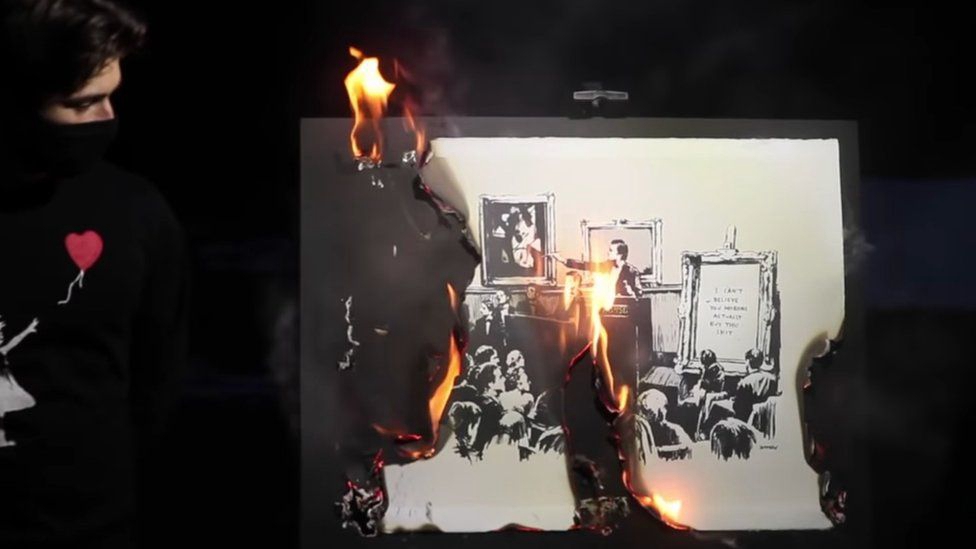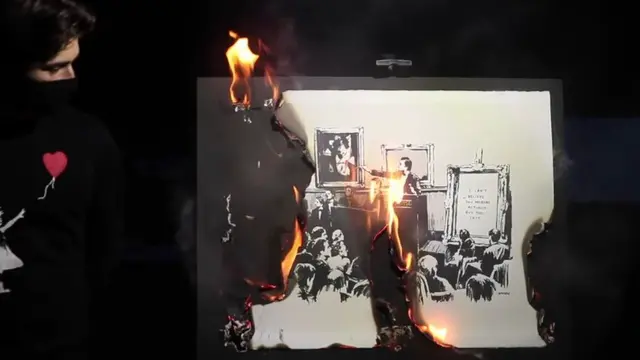
A screenshot from the livestream video showing the destruction of the Banksy artwork posted on YouTube. /BurntBanksy
An original Banksy art named "Morons" was burned and destroyed in a livestreamed video shared by the BurntBanksy YouTube account. It then auctioned off the digital token representing the work for $380,000.
According to the Art Newspaper, the work was sold as digital art through non-fungible token (NFT) technology. Since the digital version has been processed by blockchain technology with a unique identity, ownership of the NFT is equivalent to owning it.
According to the report, the Banksy was bought for $95,000 by Injective Protocol, the blockchain firm behind the stunt, who said it aimed to "inspire" tech enthusiasts and artists with this statement. Many found it ironic that after the actual painting was burned, the "digital" version was sold for four times the original price.
As a pseudonymous England-based street artist, Banksy's work itself contains a strong sense of irony. The original 2006 screenprint by Banksy entitled "Morons" depicts a Christie's auctioneer pointing at framed paintings in a crowded auction room. Next to him is a framed image accompanied by a phrase including the words, "I can't believe you morons actually buy this."
For art lovers who subscribe to NFT logic, this is another groundbreaking move. However, this is not the first time the art world has had contact with blockchain technology. Canadian musician Grimes raised $6 million by auctioning digital works using the technology. A week earlier, Christie's, one of the art industry leaders, began auctioning individual NFT works online, using ETH, a kind of cryptocurrency on Ethereum as the payment.
However, for most traditional art lovers, it is a controversial one.
Ossian Ward, author of the book "Ways of Looking: How to Experience Contemporary Art" said that people can say anything is a work of art, but if they burn a Banksy and then want money for it, that ranks pretty low on the art scale for him.
"Although creative destruction of art is not new ... it is always upsetting and shocking to see a piece being destroyed," said Gabrielle Du Plooy, founder of Zebra One Gallery.
 简体中文
简体中文

